






An Architectural Gem
The foundation stone for Victoria Hall, Higher Bebington, was laid down in 1897, on land donated by Miss Catherine King for the benefit of the residents of Higher Bebington. Miss King, in the deed of conveyance, requested that the building be designated as the village hall. Building began in the year of Queen Victoria’s diamond jubilee and, as the Village Road upper elevation frieze reveals, it became Victoria Hall not The Village Hall.
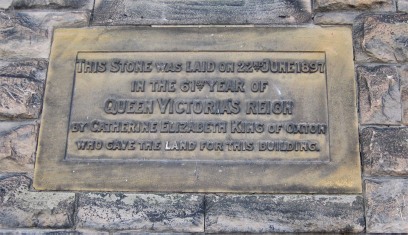
The original hall is constructed, as its base reveals, of Storeton stone, a local sandstone quarried only a few hundred yards away at one of the Storeton quarries. The sandstone is of a pale creamy colour. The upper elevations are white rendered with intricately painted floral friezes to the top storey. The base and upper elevations are separated by red brick banding, under a series of red clay tile roofs.
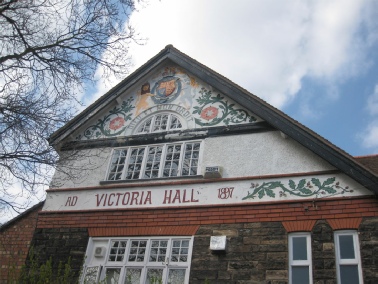
Ould and Grayson were the architects of Brook Street and Cross Street, as well as a number of the public buildings and Poets’ Corner, at Port Sunlight. It would be wonderful to discover that Edward Ould was the architect of Higher Bebington’s own gem of a building.
The interior of the original building supports further the fact that Victoria Hall was constructed in the style of the Arts and Crafts Movement. The beamed ceiling of the large hall harks back to the timber framed constructions of the Medieval Period. The low dado rail or chair rail is a further architectural feature of the large hall. Such rails were added to prevent chairs from damaging the walls. The turned staircase in the entrance hall has balustrades and spindles which suggest the unpretentious architectural elements of the Arts and Crafts era. The delightful windows in the two storey part of the building of 1897 enhance its beauty, as well as adding to the inventory of features which suggest it is built in the style of the Arts and Crafts Movement. The late Victorian doors are constructed in simple tongue and groove style separated into two panels. Unfortunately, the metal furniture from each original door, which would have provided more clues, has ‘disappeared’.
Real thought was given to both the exterior and interior features of the building, providing a facility to enhance the lives of local people. The architectural style is similar to that seen in the work of Edward Ould, a local architect from the Liverpool firm of Grayson and Ould. Ould (1852 – 1909) is remembered for designing Wightwick Manor for Theodore Mander, a Wolverhampton paint and varnishes manufacturer, an Arts and Crafts Movement jewel in the National Trust’s crown. Edward Ould was considered to be a specialist of the ‘Old English’ style of half-timbering, clay tiles, stone and red brick.
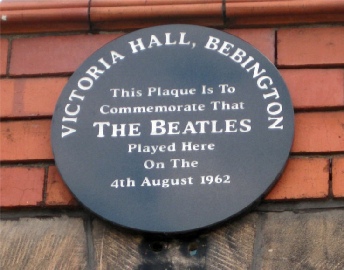
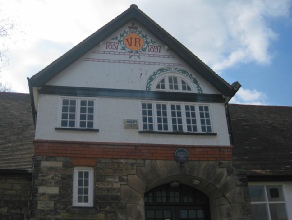
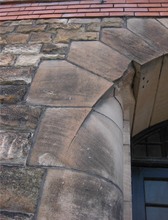
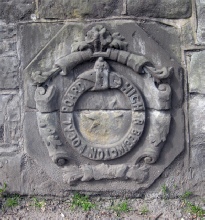
In 1953, the original building was extended to serve a growing community. This provided a further smaller hall under a clay tiled pitched roof. A lounge, kitchen, washroom facilities and entrance hall were added in a flat roofed extension to link the two halls. 2012 has seen the 1953 extension brought into the 21st century with remodelling of washroom facilities, a new kitchen and lounge with bar plus a reception hall. Victoria Hall is well on its way to returning to its former Victorian glory, although much cosier due to the fitting of double glazed windows/ secondary glazing throughout the building.
The Heart Of The Community
Victoria Hall is well used by many local groups and societies. It is also a favourite venue for parties, other private functions and charity events. For a full list of groups that hire the hall click here.
Victoria Hall is a unique resource which deserves to be fully utilised by the local community. The vision of Victoria Hall Community Trust Limited is of community regeneration with a focus to extend learning facilities for all ages. It is hoped that it will be a community meeting place with an extended programme of events being developed. We are pleased to have been able to maintain a weekly Lunch Club for members of the community to enjoy.
Further proposals include maintaining the facility for the present users, in addition to developing the growing interest in the creative and performing arts. There is a vision, too, for links to be developed with local history and natural history groups. The hall, it is hoped, will be a centre where the local history of the area can be exhibited from prehistory, as in the fossil footprints of Chirotherium storetonese, a unique dinosaur, discovered in 1838 at one of the Storeton quarries, to more recent historical events, as when the Beatles performed there on 4th August 1962. The quarries were of great importance. Local buildings, including St Andrew’s parish church and Hamilton Square’s majestic edifices were built from Storeton stone.
Valuable support has been provided by the former agency Community Matters and by Wirral Council. Victoria Hall Community Trust Limited is a company limited by guarantee and registered as a charity. VHCTL has been able to apply for grants to support the extending of facilities available at Victoria Hall. £350,000 was provided from the Social Fund to support VHCTL in developing a viable non-profit making business that secured the future of the village hall as a sustainable facility for use by all members of the local community. The hall underwent a refurbishment programme between March and May 2012 bringing the mid-20th century extension’s facilities into the 21st century. The work has provided a secure environment that is more eco-friendly and more easily maintained. This has also resulted in more flexible, multi-use spaces with up to date facilities to support people’s well being.
Public meetings were held at Victoria Hall to consult the community on their views relating to this unique resource. Victoria Hall Community Trust Limited developed a viable and sustainable business plan and in mid 2012 Victoria Hall transferred to VHCTL. The Trust manages the facilities for the benefit of local people and groups. However, to achieve this, the support of existing users of the building and new and future users is needed. If you are interested in getting involved and volunteering to help ensure the growth and sustainability of the hall then do get in contact as we would be very pleased to hear from you.
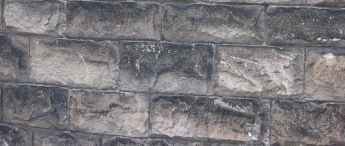
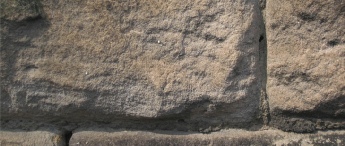



































































































Higher Bebington is fortunate to have such an architectural gem in its midst. A plaque commemorating that The Beatles played at Victoria Hall on 4th August 1962 is sited over the main door and adds a further feature of interest.
If anyone has any photographs or knowledge of the hall’s history, please contact Victoria Hall Community Trust Limited, as it would be wonderful to add information to this page.



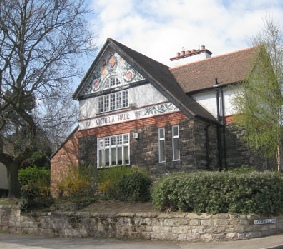



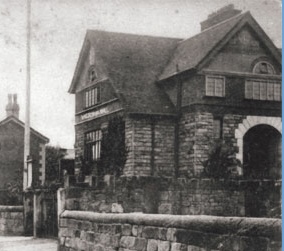




We acknowledge the valuable support of
Wirral Council and Community Matters
Victoria Hall Community Trust Limited
Charity Number: 1143914
Website Design: Wild Lentil Designs, 2012




















































































































































































































































































































